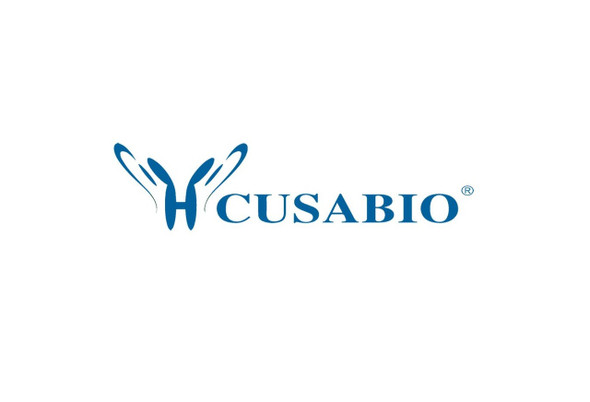Cusabio Human Recombinants
Recombinant Human Frataxin, mitochondrial (FXN) | CSB-EP613687HU(A4)
- SKU:
- CSB-EP613687HU(A4)
- Availability:
- 13 - 23 Working Days
Description
Recombinant Human Frataxin, mitochondrial (FXN) | CSB-EP613687HU(A4) | Cusabio
Alternative Name(s): Frataxin mitochondrial
Gene Names: FXN
Research Areas: Tags & Cell Markers
Organism: Homo sapiens (Human)
AA Sequence: MWTLGRRAVAGLLASPSPAQAQTLTRVPRPAELAPLCGRRGLRTDIDATCTPRRASSNQRGLNQIWNVKKQSVYLMNLRKSGTLGHPGSLDETTYERLAEETLDSLAEFFEDLADKPYTFEDYDVSFGSGVLTVKLGGDLGTYVINKQTPNKQIWLSSPSSGPKRYDWTGKNWVYSHDGVSLHELLAAELTKALKTKLDLSSLAYSGKDA
Source: E.coli
Tag Info: N-terminal 10xHis-SUMO-tagged and C-terminal Myc-tagged
Expression Region: 1-210aa
Sequence Info: Full Length
MW: 43.1 kDa
Purity: Greater than 90% as determined by SDS-PAGE.
Relevance: Promotes the biosynthesis of heme and assembly and repair of iron-sulfur clusters by delivering Fe2+ to proteins involved in these pathways. May play a role in the protection against iron-catalyzed oxidative stress through its ability to catalyze the oxidation of Fe2+ to Fe3+; the oligomeric form but not the monomeric form has in vitro ferroxidase activity. May be able to store large amounts of iron in the form of a ferrihydrite mineral by oligomerization; however, the physiological relevance is unsure as reports are conflicting and the function has only been shown using heterologous overexpression systems. Modulates the RNA-binding activity of ACO1.
Reference: "The in vivo mitochondrial two-step maturation of human frataxin." Schmucker S., Argentini M., Carelle-Calmels N., Martelli A., Puccio H. Hum. Mol. Genet. 17:3521-3531(2008)
Storage: The shelf life is related to many factors, storage state, buffer ingredients, storage temperature and the stability of the protein itself. Generally, the shelf life of liquid form is 6 months at -20?/-80?. The shelf life of lyophilized form is 12 months at -20?/-80?.
Notes: Repeated freezing and thawing is not recommended. Store working aliquots at 4? for up to one week.
Function: Promotes the biosynthesis of heme and assembly and repair of iron-sulfur clusters by delivering Fe(2+) to proteins involved in these pathways. May play a role in the protection against iron-catalyzed oxidative stress through its ability to catalyze the oxidation of Fe(2+) to Fe(3+); the oligomeric form but not the monomeric form has in vitro ferroxidase activity. May be able to store large amounts of iron in the form of a ferrihydrite mineral by oligomerization; however, the physiological relevance is unsure as reports are conflicting and the function has only been shown using heterologous overexpression systems. Modulates the RNA-binding activity of ACO1.
Involvement in disease: Friedreich ataxia (FRDA)
Subcellular Location: Mitochondrion, Cytoplasm, cytosol
Protein Families: Frataxin family
Tissue Specificity: Expressed in the heart, peripheral blood lymphocytes and dermal fibroblasts.
Paythway:
Form: Liquid or Lyophilized powder
Buffer: If the delivery form is liquid, the default storage buffer is Tris/PBS-based buffer, 5%-50% glycerol. If the delivery form is lyophilized powder, the buffer before lyophilization is Tris/PBS-based buffer, 6% Trehalose, pH 8.0.
Reconstitution: We recommend that this vial be briefly centrifuged prior to opening to bring the contents to the bottom. Please reconstitute protein in deionized sterile water to a concentration of 0.1-1.0 mg/mL.We recommend to add 5-50% of glycerol (final concentration) and aliquot for long-term storage at -20?/-80?. Our default final concentration of glycerol is 50%. Customers could use it as reference.
Uniprot ID: Q16595
HGNC Database Link: HGNC
UniGene Database Link: UniGene
KEGG Database Link: KEGG
STRING Database Link: STRING
OMIM Database Link: OMIM


-SDS__11238.1638525656.jpg?c=1)

-SDS__11238.1638525656.jpg?c=1)




